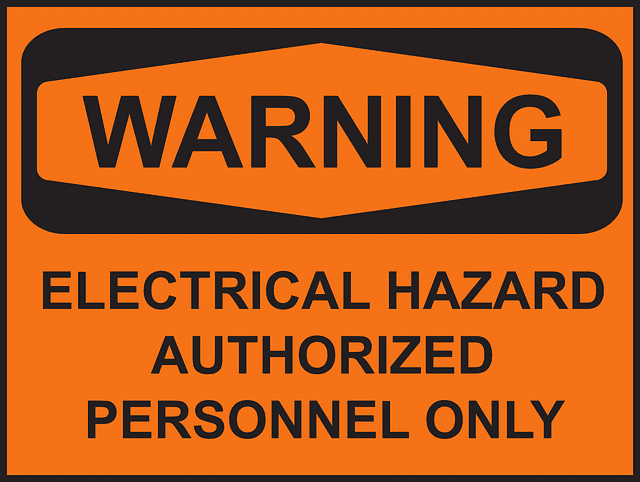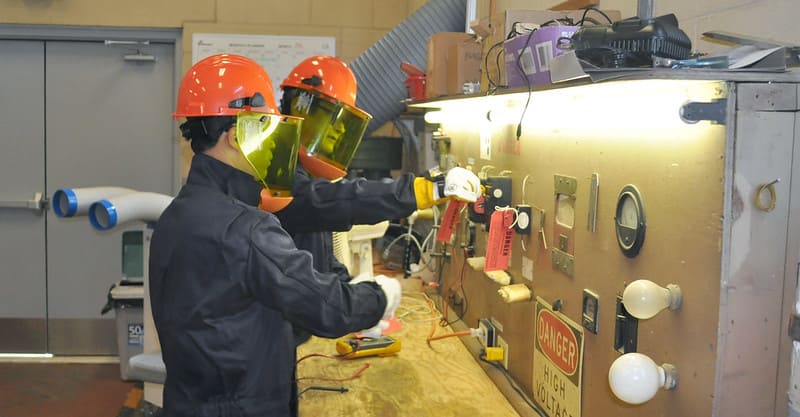Lockout Tagout

As stated by the Occupational Health and Safety Administration OSHA, Lockout Tagout or LOTO are a set of specific practices and procedures to safeguard employees from the unexpected energization or startup of machinery and equipment, or the release of hazardous energy during service or maintenance activities.
The purpose of Lock out tagout is to protect the worker from any physical injury while performing maintenance or servicing of a machine.
To prevent the release of hazardous energy, it is imperative for the operator or authorized employee to isolate any machine from its power sources, then the energy isolating device should be locked and tagged.
Lockout
It is the process of applying a lockout device on an energy isolation device to prevent its accidental activation. For example, a disconnect switch, a circuit breaker or a control valve may be kept locked while performing any associated work.
This ensures that the equipment or machine cannot be activated until and unless the lock is removed.
The energy isolation device should have a hasp or a dedicated part for the placement of lockout device. The lockout device uses a combination of lock and key to keep the energy isolation device in a safe or locked position.
Lockout devices should be robust enough to prevent accidental breakage or inadvertent activation of the energy isolating device.
Tagout
Tagout means placing a prominent warning sign on the energy isolating device. This is done to warn other people so that they do not accidently energize the equipment.
The tagout device should warn about the hazards in case the machine is activated. It should display clear instructions of not operating or energizing the machine until the maintenance work is completed.
The lockout tagout devices should also be labelled to identify which employee is authorized to place or remove them.
A tag out device should be securely attached as well as clearly visible and understandable. The tagout device should also be durable and be readable even in a wet or corrosive environment such as in the presence of acids or alkalis.
Why Lockout/Tagout is crucial?
Compliance with the lockout/tagout standard prevents an estimated 120 fatalities and 50,000 injuries each year. Workers injured on the job from exposure to hazardous energy lose an average of 24 workdays for recuperation.
The unexpected startup of a machine, or a sudden release of any type of stored energy during maintenance work can result in catastrophic results for a worker.
Thus, lockout tagout is necessary to ensure the safety of employees by preventing such incidents from occurring.
What is Hazardous Energy?
In industries, we refer to energy as anything which powers a machine, a process or a system.
Hazardous energy, however, can be defined as: "any electrical, mechanical, hydraulic, pneumatic, chemical, nuclear, thermal, gravitational, or other energy that can harm personnel"
The type of hazardous energy that a worker can be exposed to varies according to the industry, but accidental exposure to any one of them can cause serious bodily harm or even death.
Some examples are:
- Electrical Energy
Injuries due to electric shock are very common in industries.
- Mechanical Energy
Accidental movement of a rotating, cutting or crushing machine can be hazardous to the workers, and may result in amputation or puncturing of body parts.
- Hydraulic Energy
It is the energy stored in compressed liquids, hydraulic machines are capable of exerting a great amount of force which is sufficient to crush a worker.
- Pneumatic Energy
It can be found in machines or systems which are operated using high pressure air. It is a safe practice to release the built-up air pressure before initiating any sort of maintenance work on these machines.
- Chemical Energy
A process having chemical reactions will have chemical energy, such as combustion of gases.
- Thermal Energy
This is the energy released from a heat source, such as boilers or furnaces, which can cause burn injuries.
Lockout/Tagout Standards
(CFR) Part 1910.147
The OSHA standard for The Control of Hazardous Energy (Lockout/Tagout), Title 29 Code of Federal Regulations (CFR) Part 1910.147, discusses the methods and procedures required to deactivate machinery or equipment so that the release of hazardous energy may be prevented during maintenance or service work.
The standard also describes the necessary actions required for controlling hazardous energies.
29 CFR 1910.333
It discusses the requirements to protect employees working on electric circuits and equipment. It stresses the need for safe work practices including lockout/tagout procedure.
This standard applies to employees who are at risk of direct or indirect electric shocks such as working on or near electric conductors.
CSA Z460
The Canadian Standards Association's standard CSA Z460, discusses the necessary requirements for controlling hazardous energy associated with harmful machines and equipment. It also outlines the procedures of a lockout/tagout program and is also considered as a suitable standard for lockout practices.
Lockout/Tagout Procedures
OSHA has listed some pre-defined steps to perform the lockout procedure which are as follows:
- Notification: All the employees working nearby should be informed that maintenance work is scheduled and the equipment needs to be powered off and locked out.
- Identification: An authorized person may identify the type and magnitude of the energy which powers the machine. The relevant person must also identify the potential hazards of that energy along with the methods to control it.
- Shutting down: The equipment or machine will be shut down using its standard operating procedures such as switching off, pressing a button or closing a valve.
- De-activation: Energy isolating devices are de-activated to completely isolate the machine from its energy source.
- Locking out: The energy isolating devices are locked with their respective locking devices.
- Dissipation of Residual energy: Equipment such as capacitors, springs, elevated machine members, rotating flywheels, hydraulic systems contain stored or residual energy in them.
This energy must be dissipated or drained by methods such as grounding, repositioning, blocking or bleeding down.
- Verification: The isolation of equipment is verified by trying to operate it using its normal operating procedure such as ON button. Inspection is also done to make sure that equipment has been properly isolated from its energy source.
- The machine or equipment has now been properly locked in compliance with OSHA standards.
It should also be noted that a tagout device will also be placed along the lockout device. In such a case where the energy isolating device does not have provisions for locking out, then a tagout will be necessary.
“ Lockout / tagout procedure”, by NAVFAC , is licensed under CC BY 2.0
LOTO Training
An employer must ensure that their employees are aware of the purpose and functions of Lockout/tagout. Employees should have the knowledge and skills to safely apply lockout/tagout procedures.
OSHA has set 3 levels of trainings for different levels of employees, they are as follows:
- Authorized employees: They are the ones who perform maintenance work and isolation procedures. They should be trained to analyze the risks and be able to identify the type and intensity of hazardous energy involved. Safe implementation of lockout/tagout procedures essentially depend on their knowledge.
- Affected employees: They are machine operators or people who are working in the area where maintenance work is being done.
They should be trained enough to be able to recognize when a lockout/tagout procedure is being performed. No intervention should be allowed by the personnel once the equipment has been locked or tagged off. - Other employees: They are those employees who present in the area where lockout/tagout is being implemented. They should be prohibited to remove a lockout/tagout device and must not attempt to re-energize or operate the machinery.

Stay Sharp & Join our Mailing List!
Subscribe to Allumiax Blog for updates on power system studies, tips, guides and insights on electrical engineering from industry leaders.










